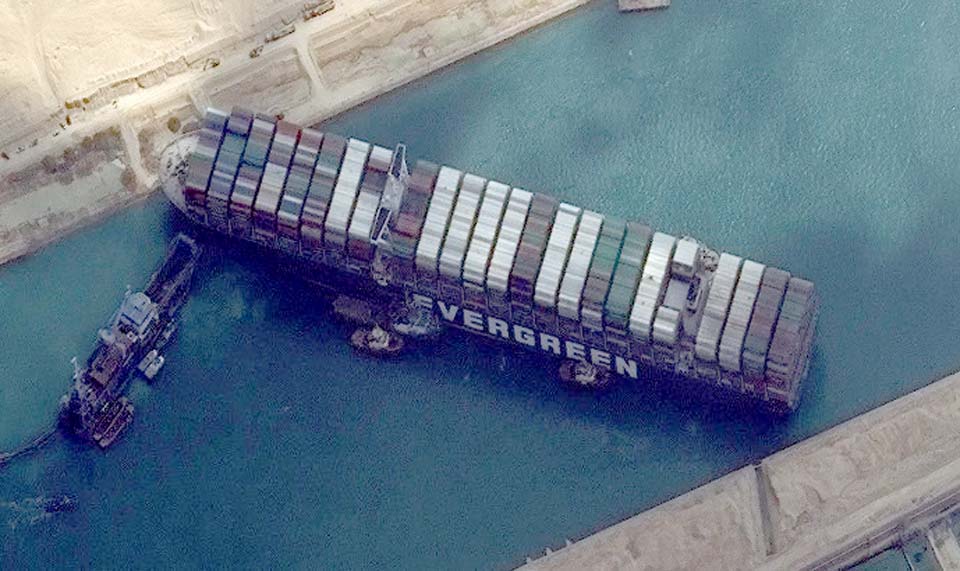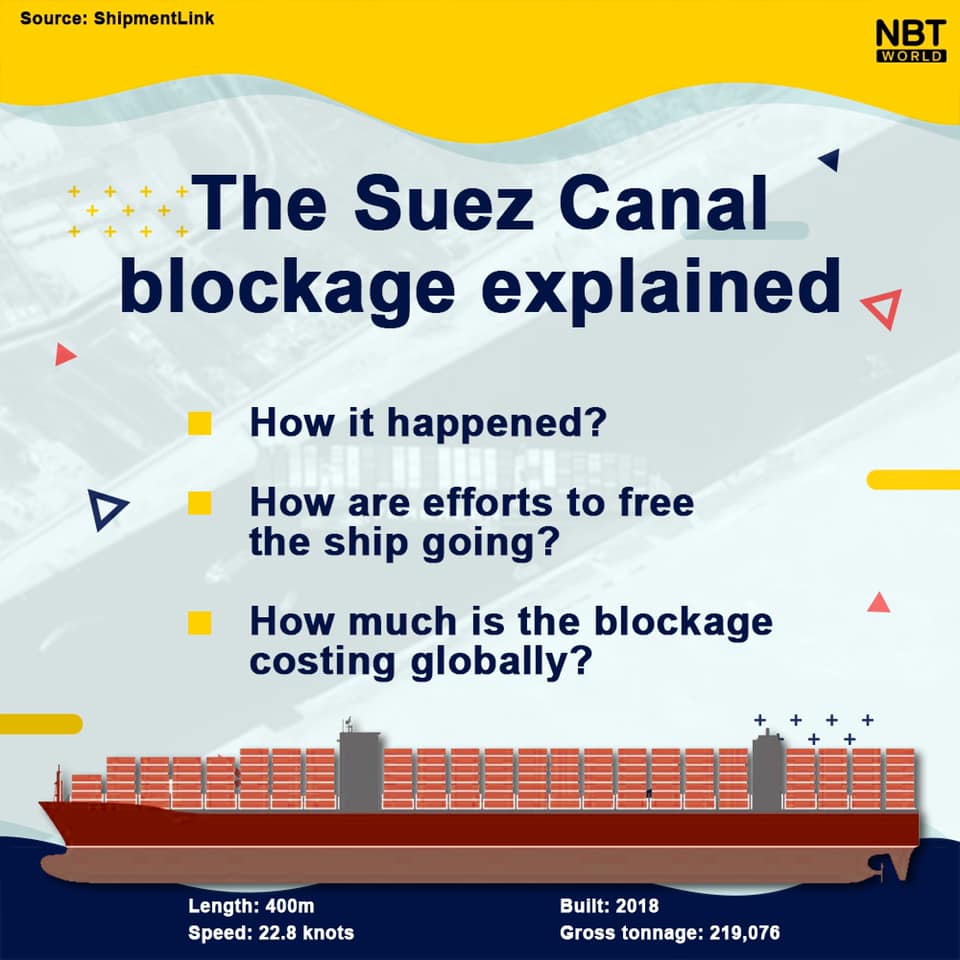
The Suez Canal is a waterway in Egypt that runs through the Isthmus of Suez, connecting the Mediterranean Sea to the Red Sea.
Since it was completed in 1869, the Suez Canal has been one of the world’s most important bodies of water; a portal between East and West that has been controlled by multiple countries, threatened to ignite war, and become a bedrock of the global economy.
How did the blockage happened?
– The Ever Given is 400m-long (1,312ft) and weighs 200,000 tonnes, with a maximum capacity of 20,000 containers. It is currently carrying 18,300 containers.
– The ship is operated by Taiwanese transport company Evergreen Marine and is one of the world’s largest container vessels.
– It has been stranded since Tuesday, after running aground and becoming lodged sideways across the waterway. At first a gust of wind was thought to be to blame.
– Authorities said an investigation would be needed to determine whether technical or human errors occurred.
– As of Sunday, there were 369 ships stuck in a tailback waiting to pass through the 193km (120-mile) canal on either side of the blockage.

How are efforts to free the ship going?
– On Saturday, 14 tugboats pulled and pushed the Ever Given at high tide to try to dislodge it and were able to move the ship “30 degrees from left and right”.
– The Suez Canal Authority (SCA) in a statement said that dredgers had so far shifted 27,000 cubic metres of sand, to a depth of 18m (59ft).
– In a possible complication, SCA sources quoted by Reuters news agency said that a mass of rock had been discovered under the bow of the ship.
– Sunday’s attempt to free the Ever Given was postponed – according to the SCA, the next favourable times for refloating the ship will be during high tide.
– Authorities reported on Monday that the ship has moved about 22 metres and tugboats are expected to continue assisting the ship to ensure it can continue moving up the canal. It’s unclear how long it will take the authorities to re-open the waterway to traffic.
How much is the blockage costing globally?
– About 12% of global trade, around one million barrels of oil and roughly 8% of liquefied natural gas pass through the canal each day.
– The Canal’s revenues were taking a $14-$15m hit for each day that the blockage continues.
– Data from shipping journal Lloyd’s List shows the stranded ship is holding up an estimated $9.6bn of trade along the waterway each day. That equates to $400m and 3.3 million tonnes of cargo an hour, or $6.7m a minute.
– The Suez Canal blockage doesn’t just affect the global shipping industry or the Egyptian economy – countless businesses, from domestic transport providers to retailers, supermarkets and manufacturers are also impacted. (NNT World)




